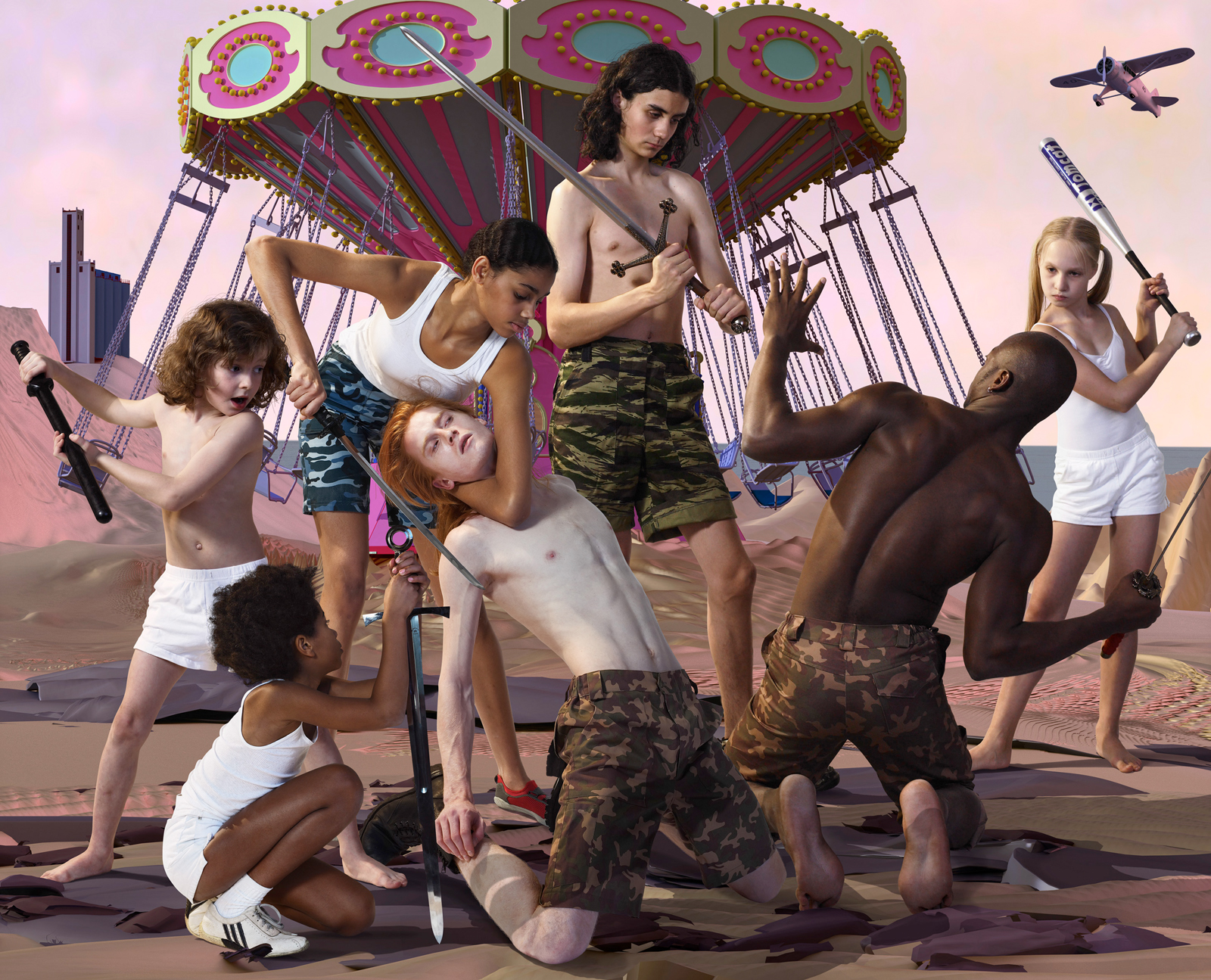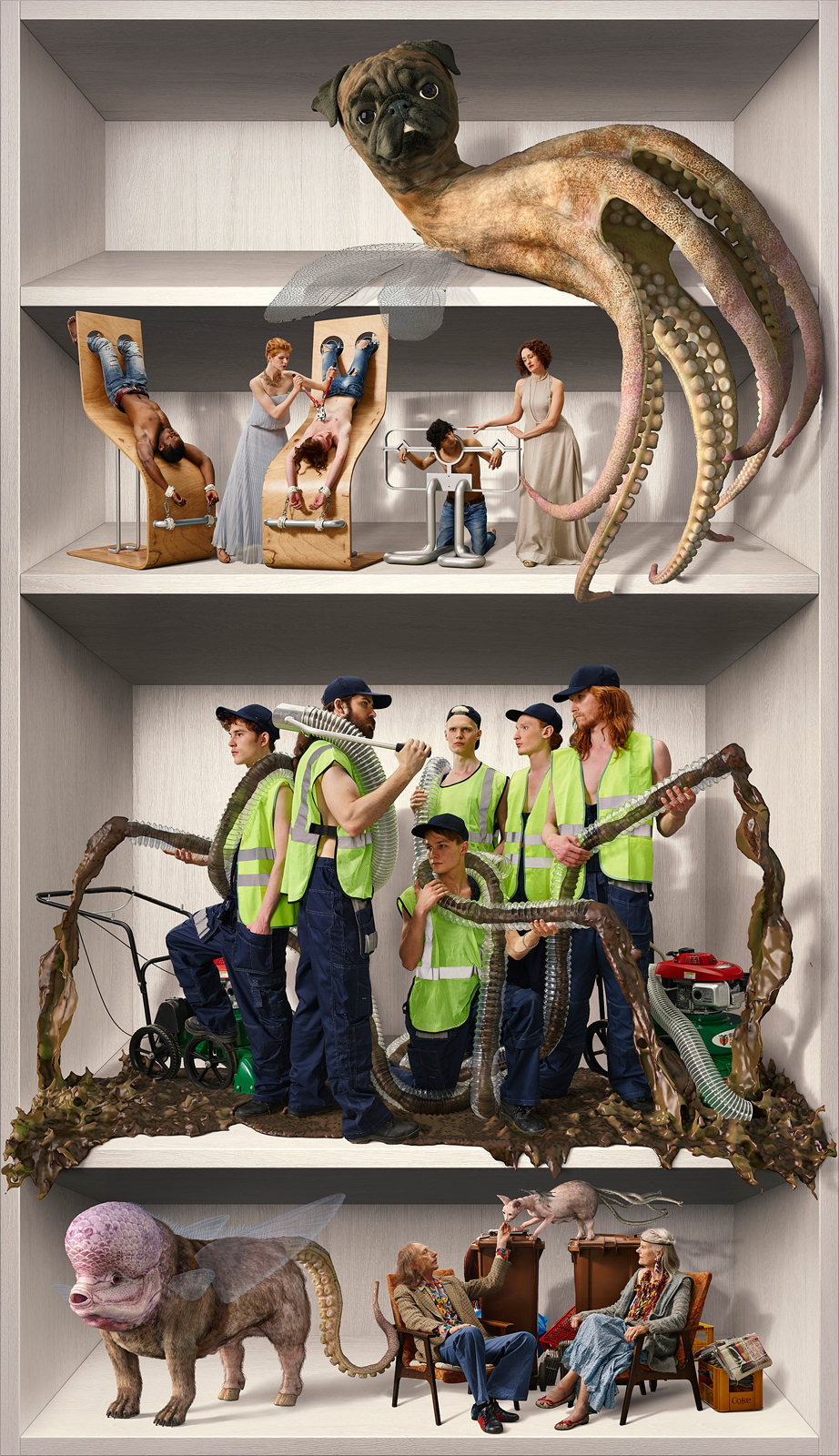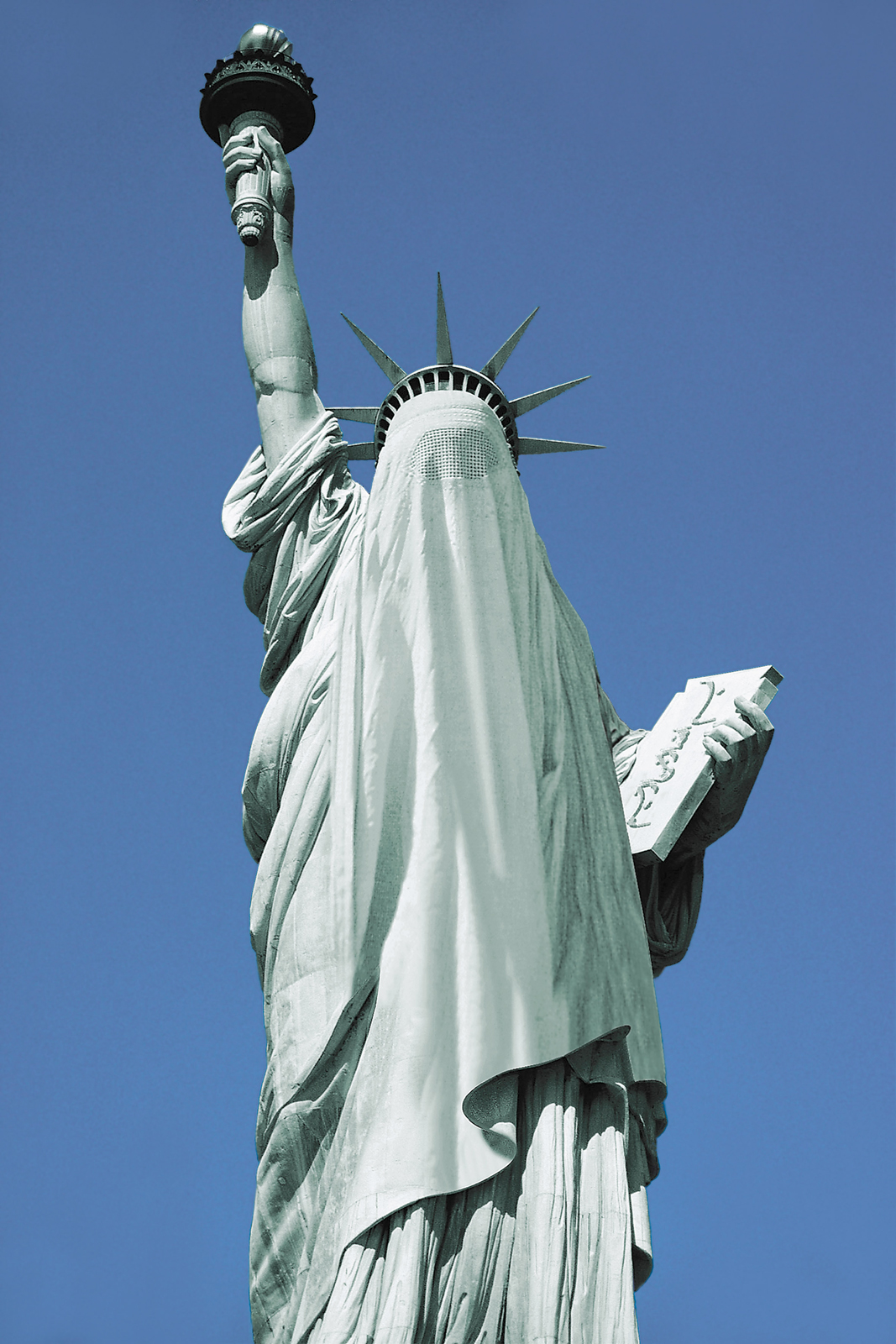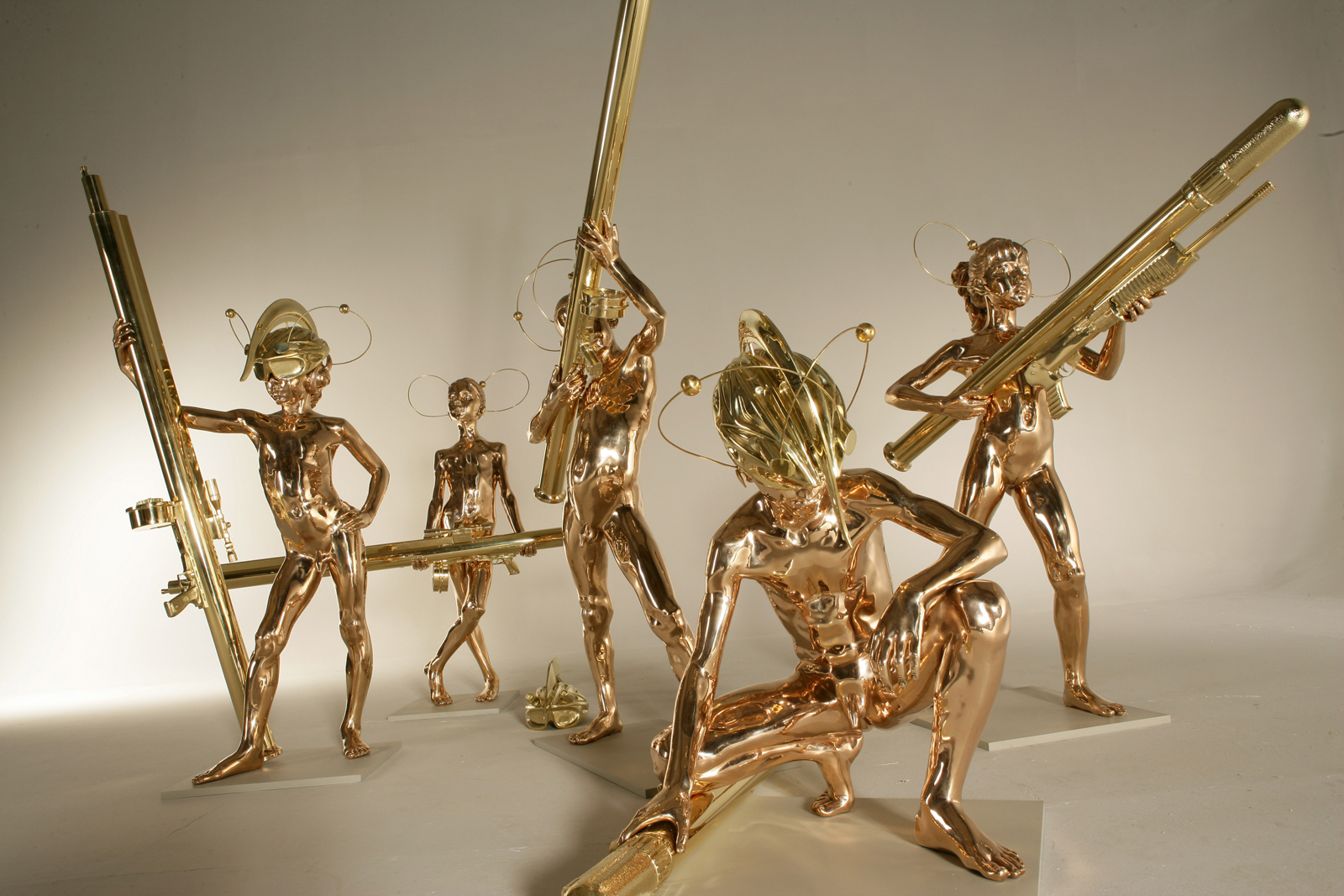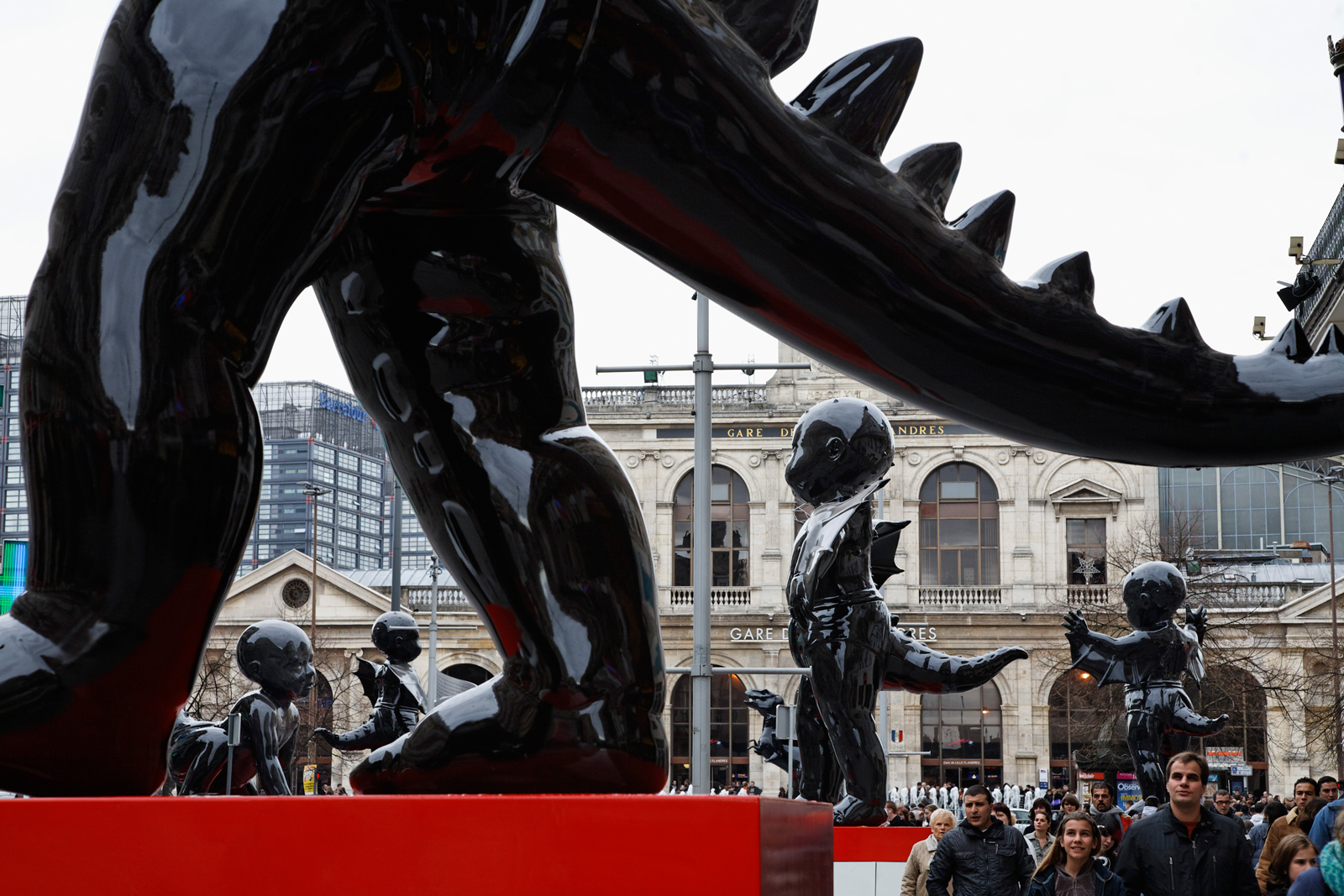AES+F - BLURRING THE LINES
BLURRING LINES WITH AES+F
AES+F IS, IF ANYTHING, THE BIGGEST ANOMALY TO HAVE HIT THE ART WORLD IN DECADES. WORKING AS A QUARTET FOR OVER 30 YEARS, WHICH IS IN ITSELF QUITE AN ACCOMPLISHMENT, THE GROUP’S AWARD-WINNING WORK BLURS THE LINES BETWEEN THE MODERN AND THE TRADITIONAL, THE EAST AND THE WEST, THE OPULENT AND THE DEPRIVED, BUT MOST IMPORTANTLY, NEVER CEASES TO BE RELEVANT TO NEW GENERATIONS OF ART LOVERS.
A collaborative quartet does not come often in the art world. What are its advantages and disadvantages?
We have been around for a long time. We might even be the only group with the same members that’s been around for more than 30 years. The big advantage of working as a collective is thatour different skills and ideas synergize to producework that we wouldn’t be able to as individuals. We really can’t think of any disadvantages at this point. The problem of most groups is their ability to address the individual members’ egos. With time, we’ve learned how to work around that, unlike most artists who aren’t capable of staying in groups for too long.
What is the collaborative process like?
At the beginning, at the idea stage, it is basically total chaos. We can’t generate ideas in anorganized way around a table, sipping a morning coffee. But once the idea has been fleshedout of many spontaneous conversations, theproduction process is very organized. Each ofus takes on tasks that are more suited to that person’s strengths.
You started as a trio, and became a quartet 8 years later. What made you decide to add a member to the group?
We began working with different forms of
photography - documentary photography, staged photography, readymade images, etc., so the addition of Russia’s most prominent photographer, Vladimir Fridkes, happened very organically.
Your work, at first glance, is very modern and on the cutting-edge of technology, yet you’ve been doing this together for almost 30 years. What’s the secret to always staying on top of our rapidly evolving technology?
We started working in 1987, and Vladimir joined in ‘95. We don’t make technological innovation our goal. We are just part of the generation thatis most capable of reflecting on the impact oftechnology, because we lived on both sides of the tech revolution.
Our process hasn’t really changed from the beginning. It’s never really about being innovative,but more about conceptually analyzing the impactof technology on society, among other things, and about using technology in unexpected ways.
What is the most significant change you’ve experienced in the art world in the past 30 years?
The art world underwent a rapidcommercialization and commodification. Webegan working in the epoch of great movements
and stars, and now it is more of a fragmented, dispersed, and varied world. On the one hand, the market for art has grown tremendously, but on the other - connoisseurship and knowledge have become more shallow.
How important is Instagram for the group and what has it added to your process?
It is just another avenue of visual information. We are anthropologists of culture, so we absorb and integrate all kinds of visibility into our practice.
In your opinion, Is Instagram a blessing or a curse for the art world?
We don’t think of anything in terms of platitudes or dichotomies, including Instagram. As a vehicle for sharing our process and some of our work with fans, it’s rather good. However, as a platform for the art world, Instagram is totally useless and perhaps harmful because it creates unhealthy competition for the attention of the greater public between artists and “influencers”.
It also flattens out visual culture, because it eliminates the significant cultural difference between content production and art-making. Artists on Instagram become just another content generator that increase ad revenue for the platform itself but serve no greater cultural purpose.
“We exist within a space where cultural boundaries no longer apply, where myths and traditions have separated from their foundations and exist together in a contemporary virtual space. The world is undergoing cultural osmosis where everything is gradually blending into one, which is a reality that our works reflect.”
In your opinion, what is the fundamental difference between content production and art-making?
Content must be easily accessible and very intelligible, so, in that sense, it is very straightforward and banal in its intentionality, because it always has a specific purpose. Art does not have a purpose beyond itself.
Art is more multifaceted and always has as many meanings as there are interpretations. The meaning in art does not necessarily have to be intelligible or purposeful, but it must still communicate. In that way, really bad content can be phenomenal art, and vice versa.
Your work is extremely multi-disciplinary. It ranges from the traditional to the
modern and everything in between. How do you go about choosing the mediums you use for each piece?
We do not differentiate between the traditional and the modern. The concept unfolds differently depending on media, so it is just a matter of choosing aperspective on the idea. Each mediumcarries a certain connotation and relationship to the concept.
The material can also have a paradoxical effect on meaning. A good example of this is the project we premiered in Palermo last year called Mare Mediterraneum, where the use of porcelain as a medium has a strong relationship to tradition and the bourgeoisie, while the topic it addresses
is an emotional and controversial political issue of refugees.
Your work can be described as both psychedelic and sociopolitical. How do you go about marrying the two?
It’s one of the characteristics of art in general, to combine elements that aren’t normally found in other social practices. The contemporary media stream, of which the social-politic is a big part, has a kind of hallucinatory, surreal, and absurd character.
The 24-hour news cycle is a psychedelic trip in and of itself. We don’t marry the sociopolitical with the psychedelic because they are already married in the social consciousness. We just elucidate this unholy union in our work and make it available for publicreflection.
Having created pieces for decades now, under different political regimes, has politics ever gotten in the way of your creative process?
We never paid any attention to political winds in terms of our creative process.We never self-censored. But we did comeup against political obstacles to showing our work many times. We don’t consider ourselves political activists in the sense of supporting a single party or political ideology, but as Orwell said, in times of universal deceit: “speaking the truth becomes a revolutionary act”.
We think that art is supposed to provoke
people to examine their perspective on an issue or a situation. We try to use contemporary political realities in allegorical ways to examine more global phenomena pertaining to humanity and being in general.
Whenever the world is going through an economic crisis, Art is almost always the first thing to be deemed expendable. How important is Art in times of crisis?
Total capitalism works in a funny way. If you look at any recent economic crisis, its effect on the market of art is actually positive. Governments and the general public obviously deem programs that support art expendable and cut funding for them. At the same time, wealthy people poured money into artworks by already famous and expensive artists as a way to protect their assets from volatility and exacerbated the inequality within the art world. So, any economic crisis would actually propel commodification of art as opposed to the contrary. But on the other hand, a good example ofwhat happens during a crisis is currently Moscow, where there is a new, young, and highly engaged generation that identifies with art and culture, but one that doesn’t have money to buy it. This is an inspiring example because it reminds us that art still isn’t only about money, but it is first and foremost for the public.
You often depict multiple subjects in your pieces, each seemingly coming from different cultures, eras, and sometimes different species. What is the idea behind such an eclectic blend of characters?
We exist within a space where cultural boundaries no longer apply, where myths and traditions have separated from their foundations and exist together in a contemporary virtual space. The world is undergoing cultural osmosis where everything is gradually blending
into one, which is a reality that our works reflect.
Your work has been showcased in the most esteemed festivals and museums in the world. What is left on your bucket list?
We still have a lot to do! Especially in America as well as in the Middle East and Asia, wherewe haven’t really shared our work much at all.
What’s next for AES+F?
We just finished Turandot, which we created as a setdesign for Giacomo Puccini’s opera and premiered it in Palermo in collaboration with Italian theater director Fabio Cherstich. It is a techno-feminist vision of the future, where China is a global empire ruled by a misandrist tyrant –- Princess Turandot, which can be seen as an extreme response to today’s America.
The opera will travel around Europe and hopefullyelsewhere. Now we are working on a full project, separate from the opera but based on our set design, consisting of a video installation and manyother elements in different media.
INTERVIEWED BY RALPH ARIDA






